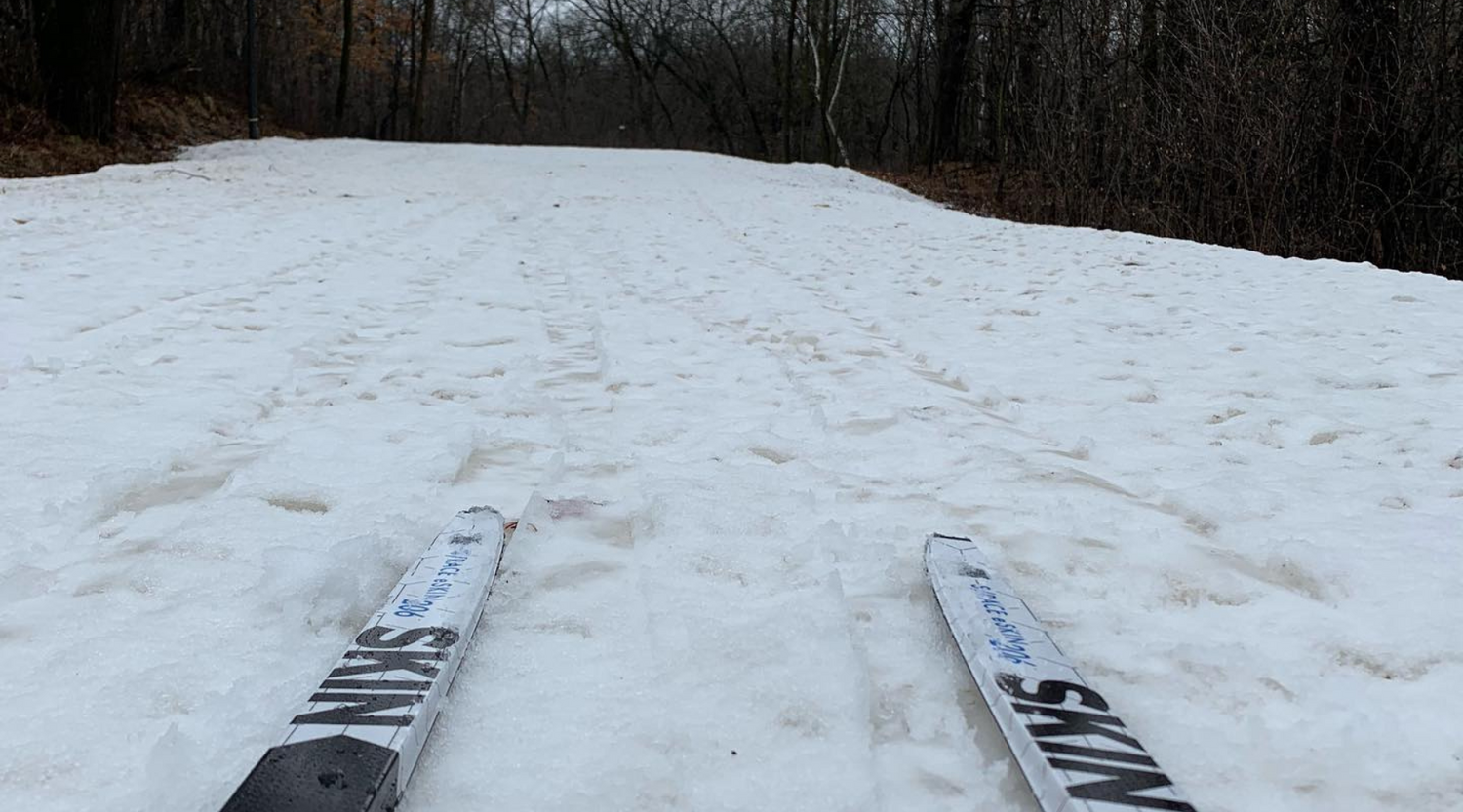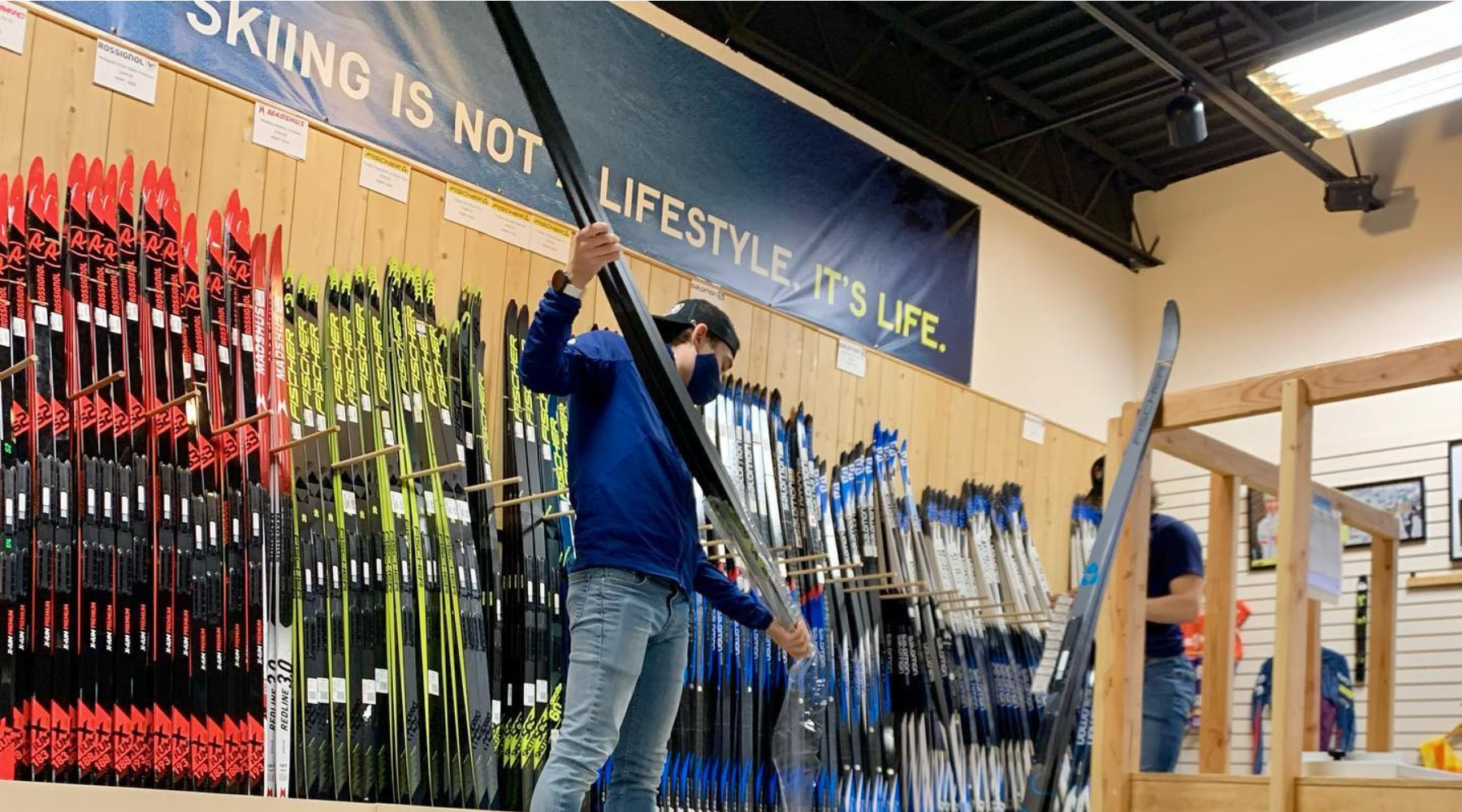We hear a lot of terms thrown around for skin skis, with many referring to them as waxless skis. Although you do not need to apply sticky temperature specific kick wax before you go out, you will benefit from occasional waxing. Keep in mind that you can take your skin skis out for seasons of skiing without maintaining them in any way and they will still work and slide on the snow. The best practices below however; will keep your skin skis in good shape and you will be rewarded with better kick and better glide!
The skins themselves on skin skis are made by a variety of manufacturers and made with a variety of fabrics. These are mainly mixes of synthetic material and mohair, with synthetics being slightly more durable while sacrificing a little bit of speed and mohair being freer underfoot but not providing as much longevity.
Basic Glide Waxing:
Whether you are using liquid waxes or iron-on waxes for you skin skis; it is important to wax them and keep them saturated to protect the structure of the ski and repel both dirt and moisture. See our more detailed article on general new ski care here.
Skin Cleaning and Care:
There are two main lines of products on the market for your skin skis. The first is Skin Cleaner which works just like it sounds. If you are skiing in areas with dirty snow (tree sap, dirt, kickwax left on the trail), you will need to use cleaning products in order to maintain the kick qualities of your skins. If the fabric has picked up dirt it will impact both kick and glide as the extra buildup under your foot will drag.
Skin care products are designed to keep dirt and moisture from building up under your foot which again will impact performance negatively.
Special Notes:
Grinding a skin ski and especially a brand new skin ski does come with its challenges. We traditionally clean up the factory grinds on skin skis and will not regrind a brand new skin ski as opposed to other new race skis at the shop. In order to grind a ski they need to be passed over the stone which would grind through the skin material. To avoid this we have to only partially pass the ski which leaves a transition area in front of and behind the skin insert. The best way to avoid this is to grind your skin skis at the same time that you will be installing new skins in order to give a buffer area. Although this mark does not impact ski performance it is not ideal for waxing and ski maintenance.


